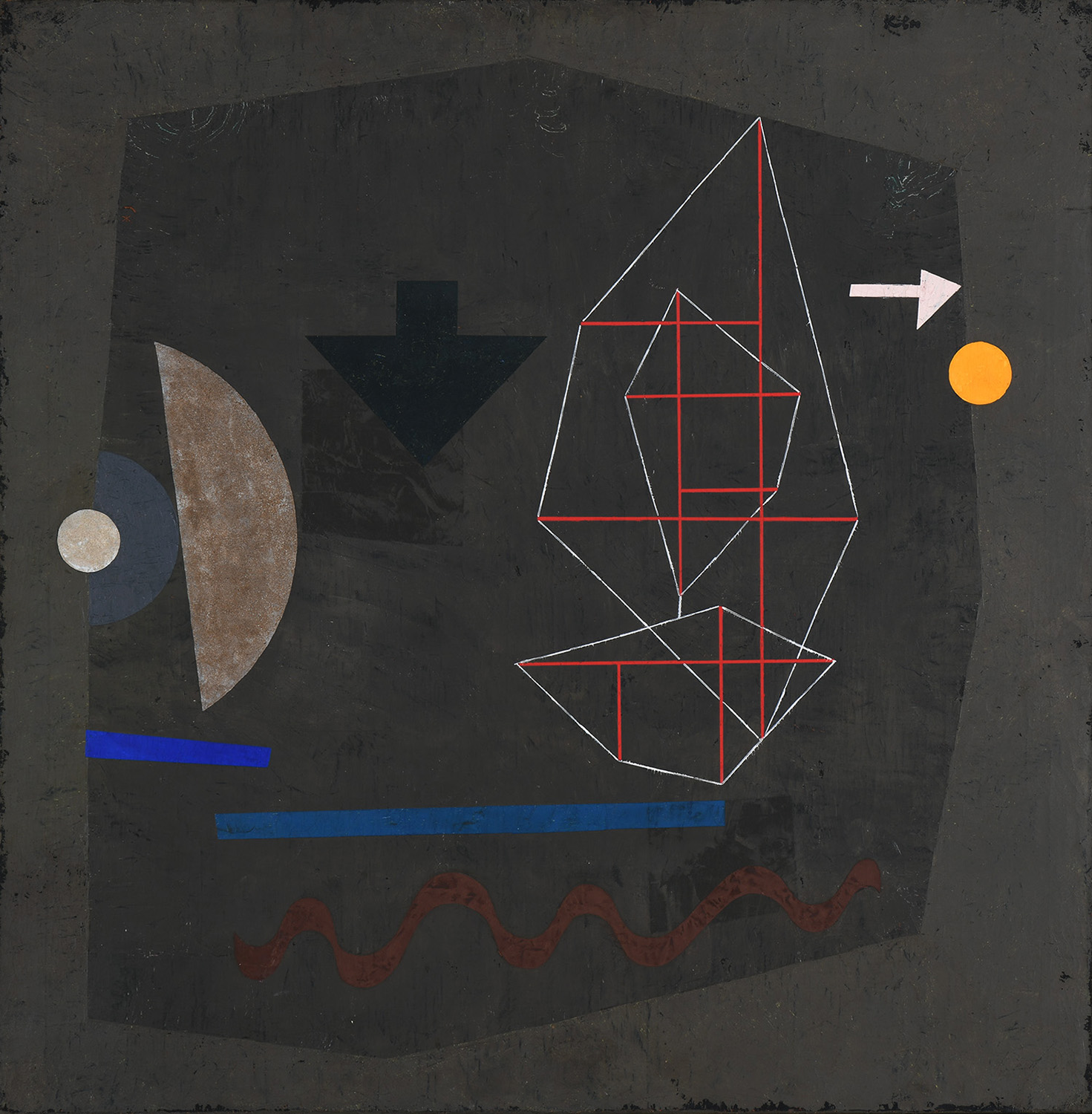Possibilities at Sea
1932
Paul Klee (Swiss, 1879–1940)
Encaustic and sand on canvas
Norton Simon Museum, The Blue Four Galka Scheyer Collection
In contrast to the playful figuration of his earlier work, Possibilities at Sea demonstrates how Klee’s approach was transformed by his decade at the Bauhaus, a leading school of art and design in Germany. Here, his interest in abstract design combines with an experimental approach to the laborious hot-wax technique known as encaustic. Klee considered this composition one of his most successful; when the dealer and collector Galka Scheyer first wrote to the artist in hopes of purchasing it, his wife responded, “He is… just as much in love with ‘Possibilities at Sea’ as you are… He considers the painting a rare work, and there is no thought of a substitute for it.”
The Blue Four Galka Scheyer Collection at the Norton Simon Museum
Who was Emilie Esther “Galka” Scheyer, the woman who once owned this painting and others installed on this wall? Curator Gloria Williams Sander shares the life story of the art collector and dealer who helped popularize European modernism in a video from 2017. Scheyer befriended Alexei Jawlensky and his fellow Bauhaus artists Lyonel Feininger, Vassily Kandinsky and Paul Klee—whom she called the “Blue Four.” From 1924 until her death in 1945, she passionately promoted these artists in the United States through exhibitions and educational programs, finding particular success in California. The Norton Simon Museum is proud to be the caretaker of her extensive archive and collection of 500 paintings, drawings, prints, photographs and sculptures, including Klee’s Possibilities at Sea.
